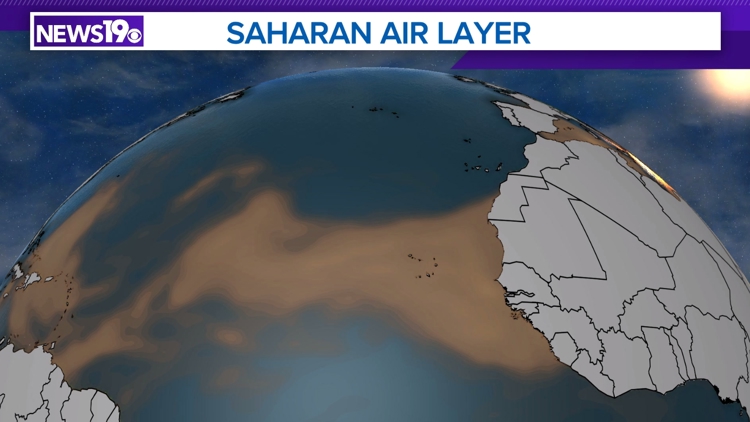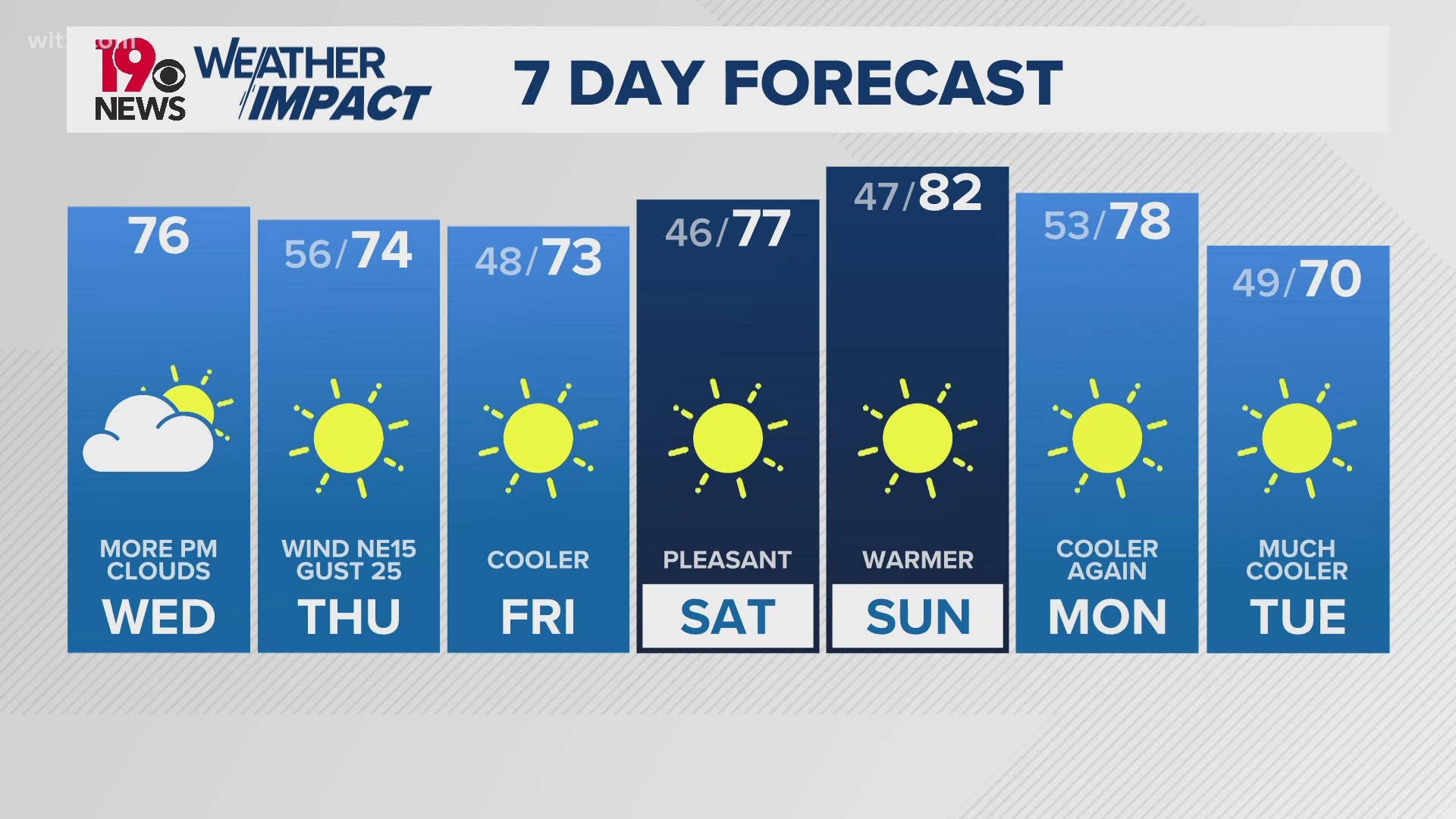COLUMBIA, S.C. — Dry, dusty air from the Sahara Desert is traveling across the Atlantic Ocean. Scientists call this air plume the Saharan Air Layer. According to NOAA, this layer usually ramps up in mid-June and occupies a 2-to-2.5-mile-thick layer of the atmosphere.
Saharan air is understandably much drier than the tropical atmosphere. This reduction in moisture can impede tropical storms.
Along with its impacts in the Atlantic, the Saharan Air Layer can cause some areas along the East Coast to experience their hottest summer temperatures. This past Wednesday, Columbia Metropolitan Airport reached 104 degrees. Afternoon thunderstorms that typically cool temperatures down struggle to develop in dry, dusty air.
A positive outcome of this air plume is more colorful sunsets. According to NOAA, a heavy load of dust in the atmosphere can enhance sunsets and sunrises with yellow and reddish hues.



